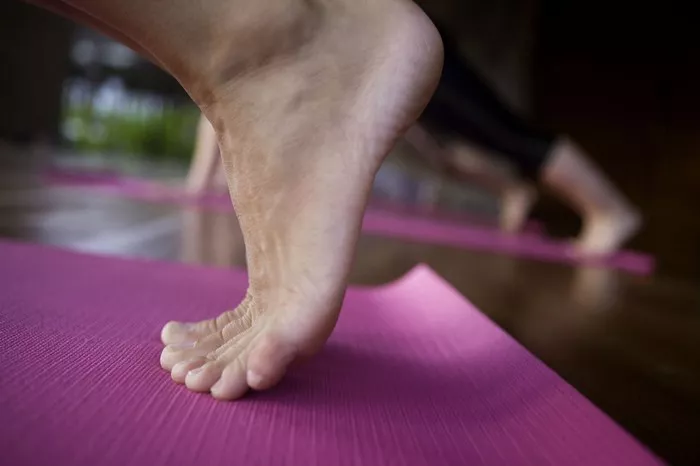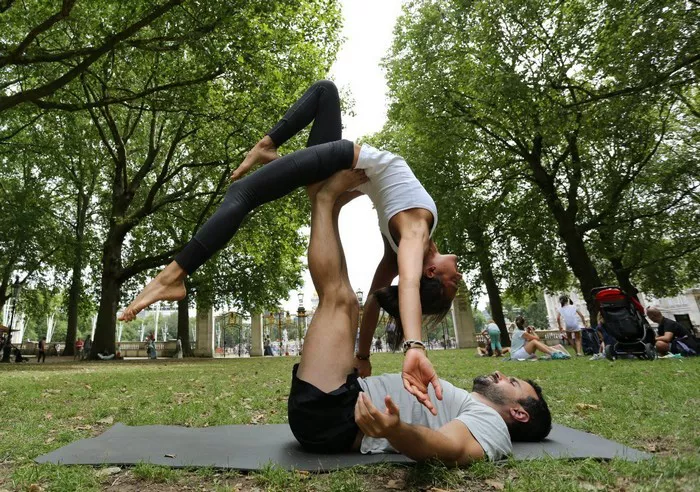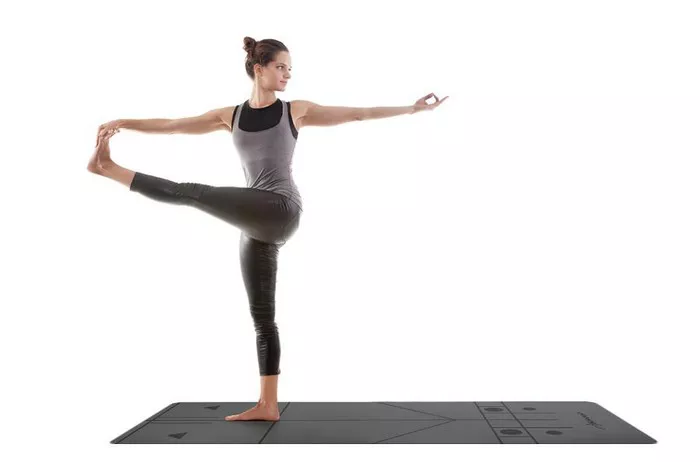Aerial yoga, also known as anti-gravity yoga or hammock yoga, has become increasingly popular in recent years. Combining traditional yoga poses with the use of a hammock or silk suspended from the ceiling, aerial yoga allows practitioners to deepen stretches, build strength, and improve flexibility in a unique and exhilarating way. However, as with any form of exercise, some individuals may experience discomfort after a session. One of the most common complaints after an aerial yoga class is dizziness. If you have ever felt dizzy after an aerial yoga session, you are not alone. This article aims to explore the reasons why some individuals feel dizzy after aerial yoga, what factors contribute to this sensation, and how you can minimize or prevent it in the future.
Understanding Aerial Yoga
Before diving into the causes of dizziness, it is important to understand what aerial yoga entails. Aerial yoga integrates elements of traditional yoga with the use of a fabric hammock that is securely suspended from the ceiling. The hammock supports your body while you perform yoga poses, which range from gentle stretches to more challenging inversions. These inversions, or poses where the head is positioned lower than the heart, such as downward dog, floating pigeon, and aerial handstands, create a unique experience of suspension and weightlessness.
Aerial yoga provides numerous benefits. These include improving flexibility, building core strength, increasing body awareness, and decompressing the spine. Inversions, in particular, are known to enhance circulation, stimulate the lymphatic system, and relieve tension in the body. However, these same inversions may also contribute to feelings of dizziness for some individuals.
The Causes of Dizziness in Aerial Yoga
Dizziness is a common sensation that occurs when the brain receives conflicting signals about the body’s position in space. When you move or change positions quickly, especially in poses that involve inversion or suspension, the inner ear, eyes, and proprioceptors (sensors in the muscles and joints) send messages to the brain to help it maintain balance. If these signals are not synchronized or if the body is not accustomed to the position, it can result in dizziness. Let’s explore some of the most common reasons why you may feel dizzy after an aerial yoga class.
1. Inversions and Blood Flow
One of the main features of aerial yoga is the use of inversions. When you flip upside down or assume poses where your head is lower than your heart, gravity works in reverse. This can cause blood to rush toward your head, increasing pressure in your brain and the blood vessels. For individuals who are not accustomed to inversions, the sudden shift in blood flow can lead to a feeling of lightheadedness or dizziness.
In particular, inversions can affect the vestibular system, which is responsible for maintaining balance and spatial orientation. The vestibular system is located in the inner ear and helps the brain process signals related to movement and balance. When you invert your body, it can temporarily alter the signals received by the vestibular system, which may result in dizziness.
2. Low Blood Pressure
Aerial yoga can sometimes lead to a drop in blood pressure, particularly during inversions. When your body is positioned upside down, gravity causes blood to pool in the lower part of the body, and this can lead to a reduction in blood flow to the brain. This decrease in blood circulation can cause a feeling of dizziness, lightheadedness, or even fainting in some cases.
If you already have a tendency to experience low blood pressure or if you are dehydrated, you may be more susceptible to dizziness during or after an aerial yoga class. Low blood pressure can also be exacerbated by other factors, such as stress, poor nutrition, or lack of sleep.
3. Dehydration
Proper hydration is essential for any physical activity, but it is particularly important for aerial yoga. During aerial yoga classes, the body engages in both strength-building exercises and deep stretches, which can lead to the loss of fluids through sweat. If you are dehydrated, your body may not function as effectively, and you may experience dizziness, fatigue, or lightheadedness.
When you are dehydrated, your blood volume decreases, which can result in lower blood pressure and inadequate blood flow to the brain. This can lead to dizziness, particularly after an aerial yoga class that involves inversions.
4. Inner Ear Disruptions
The inner ear plays a crucial role in maintaining balance. It houses the vestibular system, which is responsible for detecting changes in position and movement. When performing aerial yoga, the rapid changes in orientation (such as flipping upside down or shifting between positions) can momentarily disrupt the function of the inner ear, resulting in dizziness or vertigo.
Individuals with a history of ear problems or vestibular disorders may be more prone to dizziness during aerial yoga, as their inner ear may struggle to process the signals needed to maintain balance during inversions.
5. Overexertion or Fatigue
Aerial yoga can be physically demanding, especially for those who are new to the practice. If you push yourself too hard during a class, you may become fatigued, which can lead to dizziness. Overexertion can cause a drop in blood sugar levels, lower blood pressure, and increase feelings of fatigue, all of which can contribute to dizziness.
It is essential to listen to your body and avoid pushing yourself beyond your limits during aerial yoga. Taking breaks when needed and practicing mindfulness during your session can help prevent overexertion and reduce the risk of dizziness.
6. Anxiety and Breathing Patterns
The unique nature of aerial yoga—suspending yourself in the air and performing challenging poses—can sometimes trigger feelings of anxiety or stress, especially for beginners. Anxiety can cause a rapid, shallow breathing pattern, which in turn can lead to a decrease in oxygen levels in the blood. This can cause dizziness and a sense of disorientation.
Learning to control your breath and staying relaxed during the practice is key to preventing dizziness caused by anxiety. Focusing on deep, slow breaths and maintaining a calm mind can help regulate your body’s response to the physical challenges of aerial yoga.
7. Lack of Familiarity with the Practice
Aerial yoga involves unique movements and poses that may be unfamiliar to many practitioners. If you are new to aerial yoga, it may take time for your body to adjust to the sensation of being suspended in the air. This lack of familiarity can contribute to dizziness, as your body may struggle to maintain balance and adjust to the feeling of floating or inverting.
Over time, as you become more accustomed to the practice, your body will learn how to adapt to the movements and sensations of aerial yoga. Consistency and patience are key when it comes to acclimating to the unique experience of aerial yoga.
How to Minimize or Prevent Dizziness
If you experience dizziness after an aerial yoga class, there are several strategies you can implement to minimize or prevent it from happening in the future.
1. Build Up Gradually
If you are new to aerial yoga or inversions, it is important to build up gradually. Start with beginner-friendly poses that do not require inversion, and slowly work your way up to more challenging poses as your strength and balance improve. This will allow your body to adjust to the physical demands of aerial yoga without overwhelming it.
2. Stay Hydrated
Make sure to drink plenty of water before, during, and after your aerial yoga class. Proper hydration helps maintain healthy blood pressure and supports optimal brain function, reducing the risk of dizziness. Consider drinking water or an electrolyte drink if you have been sweating heavily during the session.
3. Avoid Inversions if You Are Prone to Dizziness
If you have a history of dizziness or balance issues, consider avoiding inversions or poses that place your head lower than your heart. You can still enjoy the benefits of aerial yoga by focusing on poses that do not involve inversion, such as seated stretches, standing poses, and gentle hamstring stretches.
4. Breathe Deeply and Relax
Incorporating deep breathing into your practice can help you maintain focus, reduce anxiety, and prevent dizziness. Practice slow, deep breaths throughout your session, and make a conscious effort to stay relaxed. This will help regulate your blood pressure and ensure that you remain grounded throughout your practice.
5. Take Breaks as Needed
If you start to feel dizzy or lightheaded during your class, listen to your body and take a break. Rest in a seated or lying position with your feet on the ground and allow your body to recalibrate before continuing. Taking breaks when necessary is essential to prevent overexertion and maintain your safety.
6. Consult a Doctor
If dizziness persists despite taking precautions, or if you have underlying health conditions that may contribute to dizziness, consider consulting with a healthcare professional. Conditions such as low blood pressure, vestibular disorders, or ear problems may require special attention and modifications to your aerial yoga practice.
Conclusion
Dizziness after aerial yoga can be caused by a variety of factors, including inversions, changes in blood flow, dehydration, inner ear disruptions, overexertion, anxiety, or lack of familiarity with the practice. Understanding the reasons behind your dizziness and taking proactive measures can help minimize or prevent this sensation in future classes. By staying hydrated, building up gradually, listening to your body, and focusing on deep breathing, you can enjoy all the benefits that aerial yoga has to offer while keeping dizziness at bay. Remember, consistency and patience are key to mastering any new form of exercise, and aerial yoga is no exception.
Related Topics













